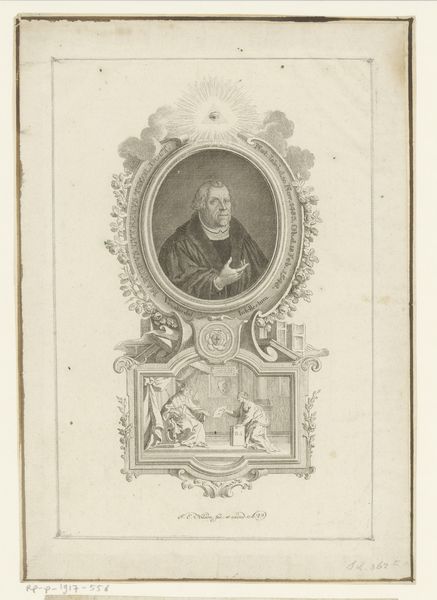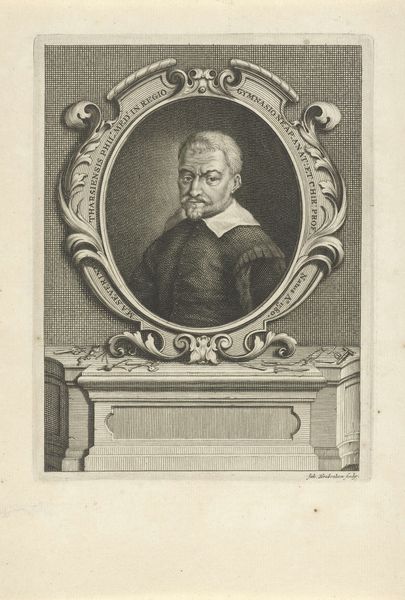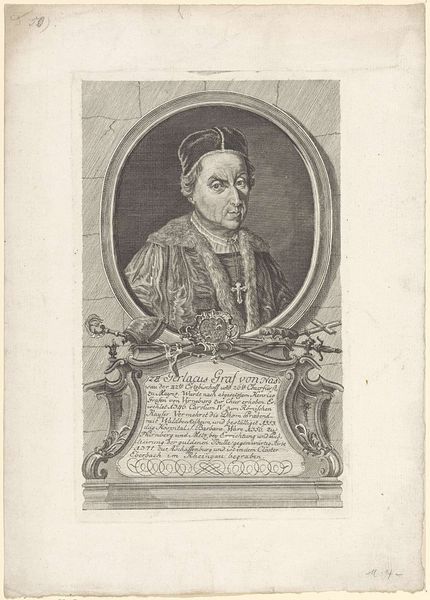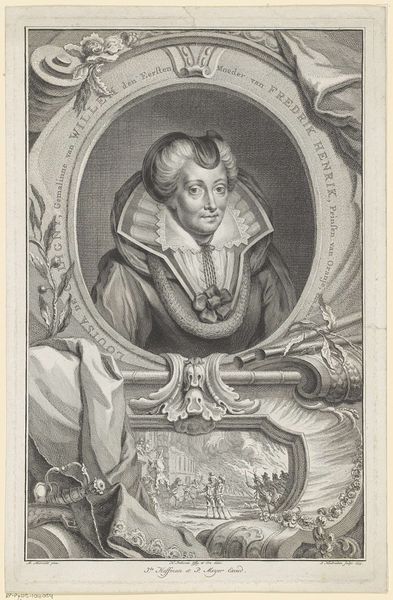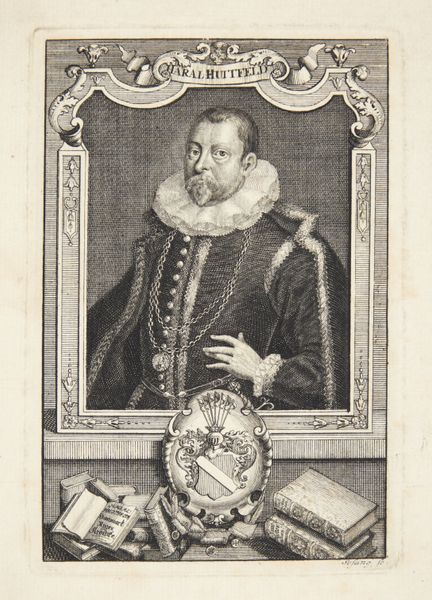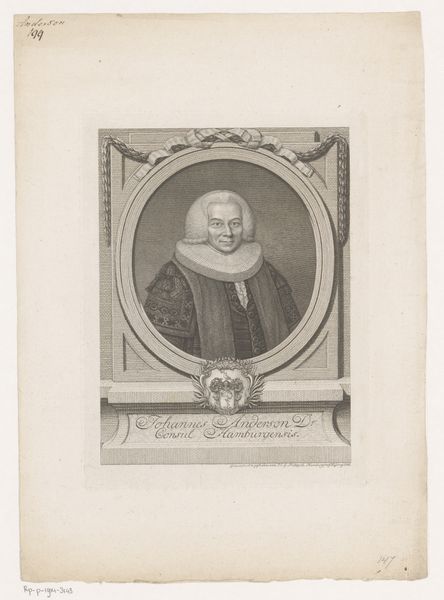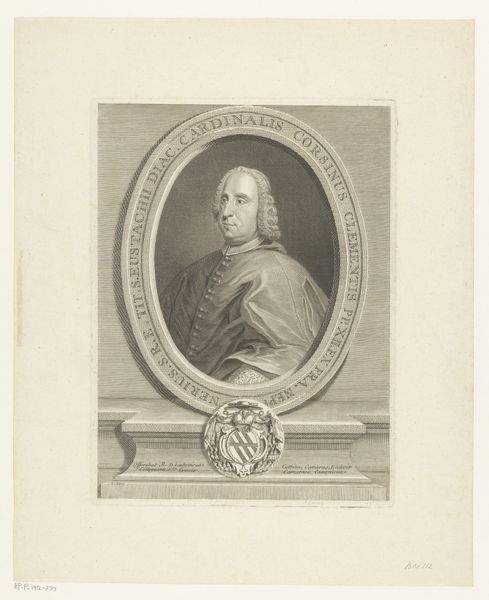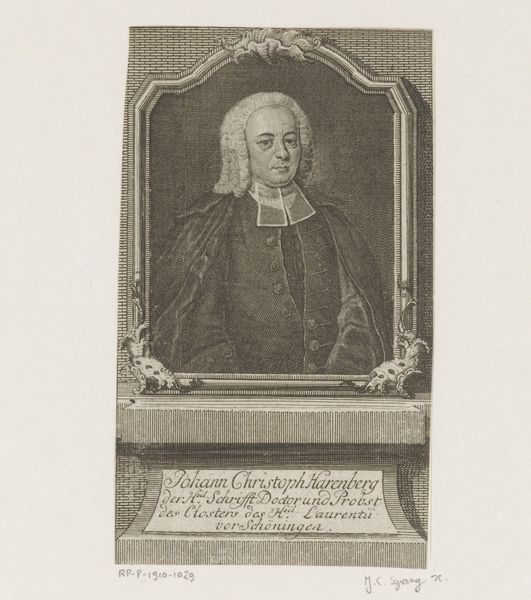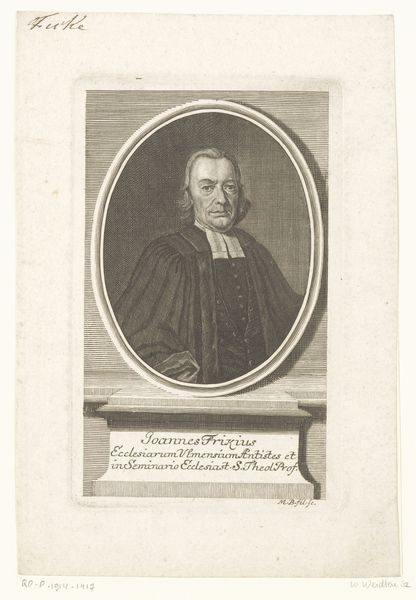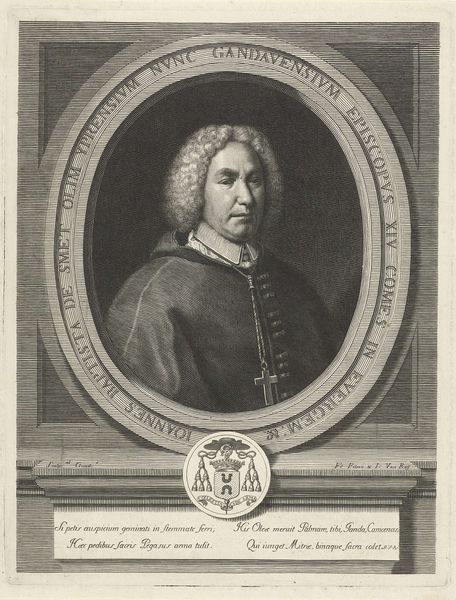
Dimensions: height 120 mm, width 78 mm
Copyright: Rijks Museum: Open Domain
Curator: Looking at this engraving, I get this real sense of stillness... It's quite formal. Editor: That's precisely what Johann Esaias Nilson intended in this portrait of Philipp Anton Sigmund von Bibra, created between 1765 and 1788. We are looking at an excellent example of baroque portraiture. Notice how von Bibra is positioned within an elaborate, almost theatrical frame. It certainly speaks to a certain status, doesn't it? Curator: It does! The frame itself is part of the experience; cherubs, swirling floral motifs… there's a sort of visual layering. And those emblems underneath – a beaver? What's going on there? Editor: Absolutely. Those are coats of arms, visually connecting him to nobility and authority. The beaver, for instance, could symbolize industry and hard work. It was a period obsessed with symbols and their hidden meanings in representations of power and lineage. Curator: Oh, I love hidden meanings! But he doesn't look particularly... happy. A bit stern, perhaps? Editor: Yes, portraits like these had a precise function. They weren’t really about capturing a fleeting moment of joy but establishing status. He's wearing elaborate lace. That’s pure showmanship. It reflects both individual wealth and the political dynamics of that era. Class, gender, power, even faith, all meticulously put on display. Curator: True! And the level of detail in the engraving… astonishing. I keep looking at the lace and wondering how long it took to create those delicate lines. It is mesmerizing. The more you look, the more is revealed. You notice something new each time. Editor: The beauty of portraiture then lies not only in its aesthetic appeal but in the social stories it can unravel for us. These were intentional images and they offer us a window into a very particular, highly stratified society. It compels you to reflect on hierarchies, representations, and the many unspoken power dynamics that defined that world. Curator: It’s quite something to think about how images like these acted almost as early forms of, well, PR. Johann Esaias Nilson really captures an entire world in this small engraving, it makes you ponder all the history that shaped this artwork. Editor: Exactly. It also makes us consider our relationship with the artwork but also society now. How far have we come? And in what ways, perhaps, do the power structures embedded in this portrait continue to shape our lives today?
Comments
No comments
Be the first to comment and join the conversation on the ultimate creative platform.


